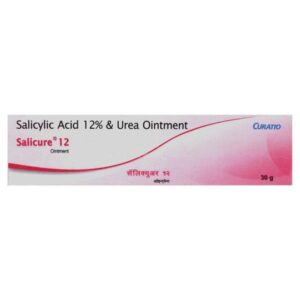PROPYLENE + SALICYCLIC + METHANOL
Propylene: I’m sorry, but I couldn’t find any information on a drug called “Propylene.” It is possible that you may have misspelled the name or the drug may not be a commonly used or recognized medication. It’s always important to double-check the name and consult a healthcare professional or pharmacist for accurate information about any medication.
Salicyclic: Salicylic acid is a medication commonly used to treat various skin conditions, such as acne, psoriasis, and warts. It belongs to a class of drugs known as keratolytics, which work by softening and loosening the top layer of the skin.
The primary use of salicylic acid is as a topical treatment for acne. It helps to unclog pores, reduce inflammation, and remove dead skin cells, all of which contribute to the improvement of acne. It can also be used to treat other skin conditions characterized by thickened or scaly skin, like psoriasis and warts.
The mechanism of action of salicylic acid involves its ability to break down and dissolve the protein bonds that hold together the cells in the outer layer of the skin. This action leads to exfoliation, helping to remove dead skin cells and unclog pores. It also has anti-inflammatory properties that contribute to its effectiveness in treating acne and reducing redness.
Salicylic acid products are available in different forms, such as creams, gels, lotions, and shampoo. The concentration of salicylic acid used can vary depending on the condition being treated. Over-the-counter products typically contain lower concentrations (up to 2%), while prescription-strength preparations may contain higher concentrations (up to 20%).
The recommended dose and application frequency also depend on the specific product being used and the severity of the condition. It is important to follow the instructions provided by the healthcare professional or the product’s label.
Although salicylic acid is generally safe to use, it can cause certain side effects. Common side effects include mild skin irritation, dryness, and peeling. These side effects are usually temporary and resolve with continued use. However, if severe skin irritation, redness, or swelling occur, it is advisable to discontinue use and seek medical attention.
Some individuals may be more sensitive to salicylic acid and may experience allergic reactions, such as hives, itching, or rash. It is important to perform a patch test before applying salicylic acid to larger areas of the skin, especially for individuals with a history of allergies or sensitivity to similar medications.
Additionally, it is important to avoid prolonged or excessive use of salicylic acid as it can cause skin irritation or adverse effects. It is not recommended to use salicylic acid on large areas of the body, broken or irritated skin, or on mucous membranes.
Overall, salicylic acid is an effective and commonly used medication for the treatment of various skin conditions. However, it is important to consult a healthcare professional before using salicylic acid products to determine the appropriate concentration and application method for individual needs.
Methanol: Methanol is a toxic alcohol used primarily as an industrial solvent. It is also a dangerous substance when consumed or exposed to certain conditions. Methanol is not typically used as a medication or treatment.
In terms of its mechanism of action, methanol is metabolized in the liver through a process called oxidation. This process produces formaldehyde and formic acid, which are highly toxic to cells and can cause severe metabolic acidosis and damage to organs, particularly the optic nerve and central nervous system.
The lethal dose of methanol in humans is estimated to be around 30-240 mL. However, even smaller doses can be harmful, with symptoms generally appearing within 30 minutes to 12 hours after ingestion.
Common side effects of methanol poisoning include:
1. Gastrointestinal symptoms: Nausea, vomiting, abdominal pain, and diarrhea are common initial symptoms.
2. Visual disturbances: Methanol can cause damage to the optic nerve, leading to blurred vision, changes in color perception, and even blindness.
3. Central nervous system effects: Symptoms can include headache, dizziness, confusion, seizures, and coma.
4. Metabolic acidosis: Methanol metabolism leads to an accumulation of formic acid, which can cause metabolic acidosis, a condition characterized by an imbalance in blood pH levels.
It is essential to seek immediate medical attention if methanol poisoning is suspected. Treatment generally involves preventing further absorption, enhancing elimination, and providing supportive care. This may include administration of antidotes such as fomepizole or ethanol to inhibit the metabolism of methanol and the formation of toxic metabolites.
Overall, methanol should be handled with extreme caution and avoided in situations where accidental ingestion or exposure is possible.

